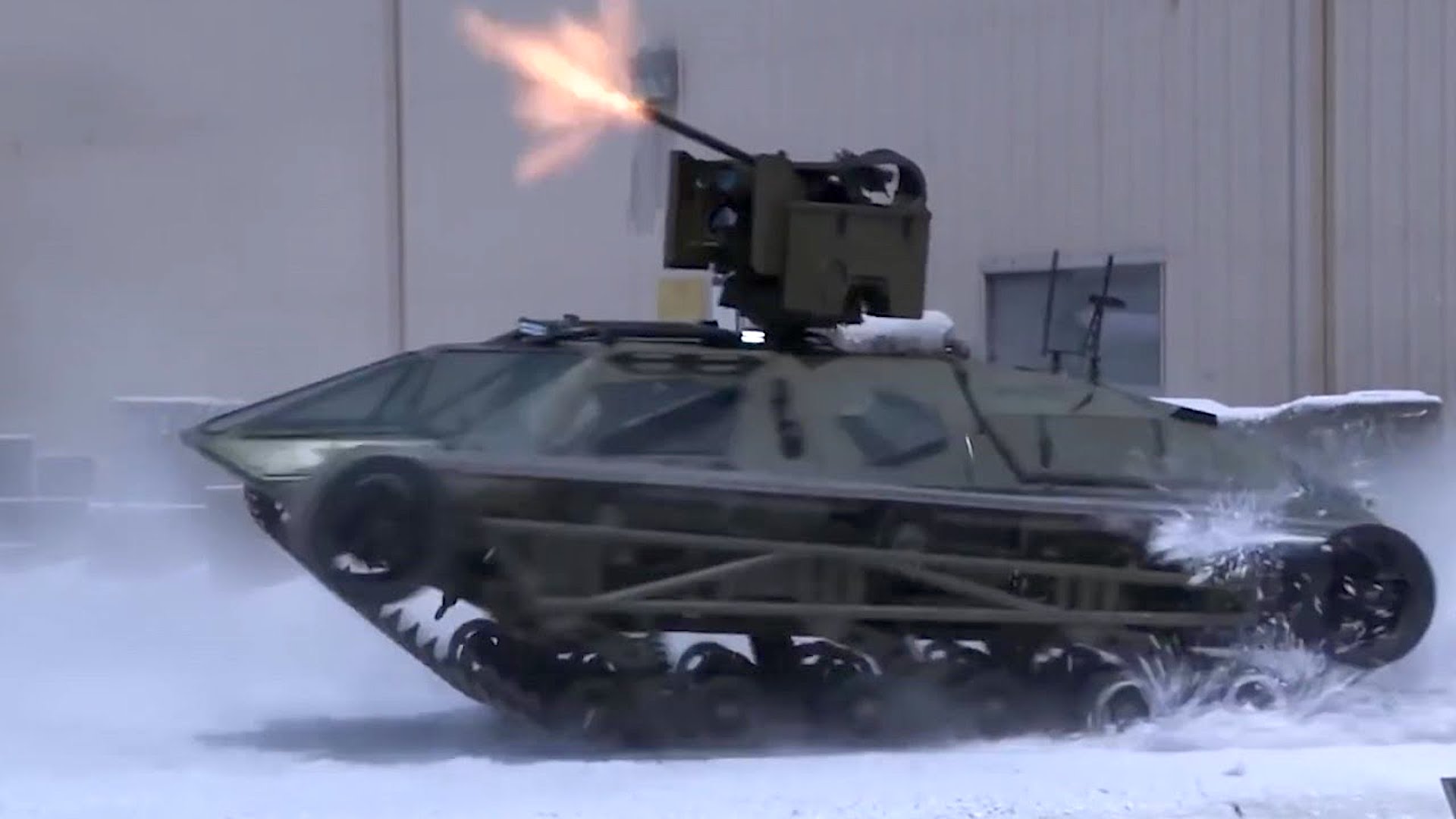

The Army is putting one of its future unmanned ground vehicles through its paces, according to new photos published by the service.
Photos published to the Defense Visual Information Distribution System (DVIDS) show a Ripsaw M5 robotic combat vehicle decked out in Army green paint during testing at Fort Dix in New Jersey in late June.
Built by a partnership between Textron Systems and Howe & Howe, the Army is currently considering the Ripsaw as part of the Robotic Combat Vehicle-Medium program that’s nestled under the service’s Next Generation Combat Vehicle Cross-Functional Team.

The Army took receipt of its four RCV-M prototypes earlier this year with plans to put all the vehicles through individual shakedown testing through September, as Defense News previously reported. The service is currently asking Congress for $84.5 million as part of its fiscal year 2022 budget to continue development across the service’s RCV portfolio and “to help prepare for a soldier experiment,” according to Jane’s.
“Prototyping and experimentation efforts will inform new ways to fight, identify system limitations and benefits, mature key technologies, and reduce technical risk,” according to budget justification documents. “The RCV program will provide an analytically backed basis for future RCV requirements documents that will drive and inform RCV programs of record.”
First unveiled at the Association of the U.S. Army expo in Washington, D.C. back in 2019, the 10-ton diesel-electric Ripsaw has a top speed of 25 miles per hour and comes outfitted with a Kongsberg Defence Systems Protector turret that can be outfitted with a remote-operated 30mm cannon and a 7.62mm coaxial machine gun, according to Army Recognition.

According to the Congressional Research Service, the service’s fiscal year 2022 plans call for integrating “a variety of RCV modules” on RCV-M prototypes, including “the Common Remotely Operated Weapon Station (CROWS) with a Javelin anti-tank missile.”
“Other modules to be integrated are the XM813 Bushmaster chain gun, as well as
smoke obscuration measures, amphibious kits, electronic warfare (EW) modules, counter Unmanned Aerial System,” according to the CRS report.
One of the most interesting features of the Ripsaw is its ability to deploy other drones — namely those developed by FLIR Systems — that can deliver 360-degree situational awareness through high-quality video feeds of the battlespace.
“The battlefield is filled with really awful places where humans do tasks today they shouldn’t have to,” NGCV-CFT director Brig. Gen. Ross Coffman previously explained. “But today, with the way our technology has advanced, our robotic vehicles can move forward of a manned force to see what’s out there, detect chemicals, put direct fire on the enemy, determine whether or not there’s an obstacle, and then team with humans to determine the best course of action.”
But the most intriguing element of the Ripsaw testing isn’t necessarily its configuration, but its cinematic pedigree: As our colleagues at The War Zone have previously noted, stripped-down versions of the Ripsaw have appeared in a variety of action movies in recent years, from the god-awful G.I. Joe: Retaliation to the excellent Fast and Furious 8: Fate of the Furious.

What can I say: if it’s good enough for family, then it’s probably good enough for the U.S. Army.
More great stories on Task & Purpose
- Step inside SERE School, where military grade hide-and-seek meets life-and-death struggle
- An Army veteran was told she never served. Her viral response was the ultimate mic drop.
- In case you were wondering: No, Russia’s new fighter jet can’t fly at twice the speed of light
- This Afghan interpreter became an American soldier. Now he’s on a mission to save his family
- A gamer leaked classified tank specs online so he could win a dumb argument
- Want to write for Task & Purpose? Learn more here and be sure to check out more great stories on our homepage.
